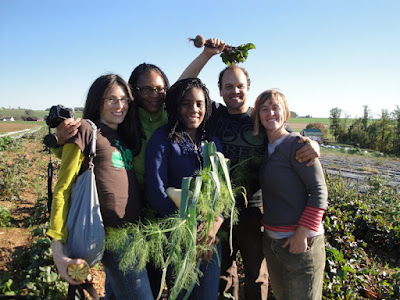 |
| Harvest from Autumn Blend Organics |
 |
| We had a the best time meeting some of our Community Supported Medicine Share members who came all the way from Harlem to visit. Carrie, Chandra, Sojourner, Casey and Eli |

We are a 5 acre certified organic farm located in Lancaster County. We grow certified organic medicinal herbs, flowers and produce. We hand craft small batched herbal remedies. We seek to empower others to reclaim their health through the ancient knowledge of natural healing traditions of whole foods and herbs.
 |
| Harvest from Autumn Blend Organics |
 |
| We had a the best time meeting some of our Community Supported Medicine Share members who came all the way from Harlem to visit. Carrie, Chandra, Sojourner, Casey and Eli |


 This was the day we planted 250 native trees in the meadow by the Little Beaver Creek in Strasburg, part of the Chesapeake Bay Water Restoration project for my dad's land.
This was the day we planted 250 native trees in the meadow by the Little Beaver Creek in Strasburg, part of the Chesapeake Bay Water Restoration project for my dad's land. 


 Cut Leaf ToothWort - The corms kind of look like teeth. It is an edible that tastes like horseradish so you can make your own wild garnish!
Cut Leaf ToothWort - The corms kind of look like teeth. It is an edible that tastes like horseradish so you can make your own wild garnish!

